When American Voters Had 2 Choices: Whig or Loco Foco
This fascinating electoral map from 1840 documents a chaotic time in American politics.
(Image: Library of Congress/2012586607)
Between now and the first Tuesday in November, electoral college maps will be plastered across newspapers and webpages with increasing frequency, providing red-and-blue visions of an imagined political future.
These maps are ubiquitous in every election year. But some are much more fascinating than others. A trawl through the electoral charts at the Library of Congress turns up one record from 1840 with particularly intriguing features. The chart shows how the nation voted in the 1836 and 1840 presidential elections—an era of tumult during which the economy tanked, radical new political parties appeared, and an in-office president suddenly dropped dead. Let’s take a closer look at this artifact of a chaotic time.
First up, you’ll notice that both elections did not take place between Republicans and Democrats, but Whigs and Loco Focos:
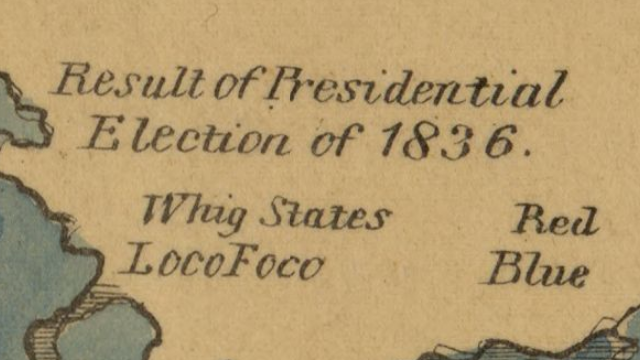
The Whig party was founded in 1834. Its members had gotten fed up with President Andrew Jackson and his Democrats, and their anti-Jackson sentiment seemed like a good enough reason to form a new political party. The Whigs lasted 21 years, disbanding in 1854 following in-fighting over the expansion of slavery to the territories. By that time, most Whigs in the north had joined a new party, anyway: the Republicans.
The “Loco Focos” term initially referred to the Equal Rights Party, a radical faction of Democrats that formed in New York in 1835. The group got its Loco Foco name after an October Democratic Party meeting in Tammany Hall, where the discussions between the old guard and the new radicals got so antagonistic that the chairman turned out the lights in an effort to end the gathering. Members of the Equal Rights Party reacted by pulling out self-igniting friction matches—newly invented and known as “loco focos”—relighting the lamps, and arguing on into the night. Soon after this, the Whigs were calling all Democrats “Loco Focos.” The media followed suit. The term was initially meant pejoratively, but the Dems ended up owning it, and it became common shorthand for the party.
For the 1836 election, the Whigs and their three-year-old party could not agree on a single candidate for president. Instead, they served up four, with each one aiming to drum up local support in a different section of the country. The idea was to get enough votes in each region to prevent the Democratic candidate, Martin Van Buren, from winning. If their four candidates managed to get enough votes between them to oust Van Buren, they would then sort out the question of which one to plug into the role of president.
That was the plan, but the election brought a different result: the presidency was awarded to Van Buren, who secured 170 electoral votes compared to the Whigs’ combined 124. Here’s how it shook out, state-by-state. (You’ll note that Florida is left blank—it was a territory at the time, and therefore not eligible to vote):
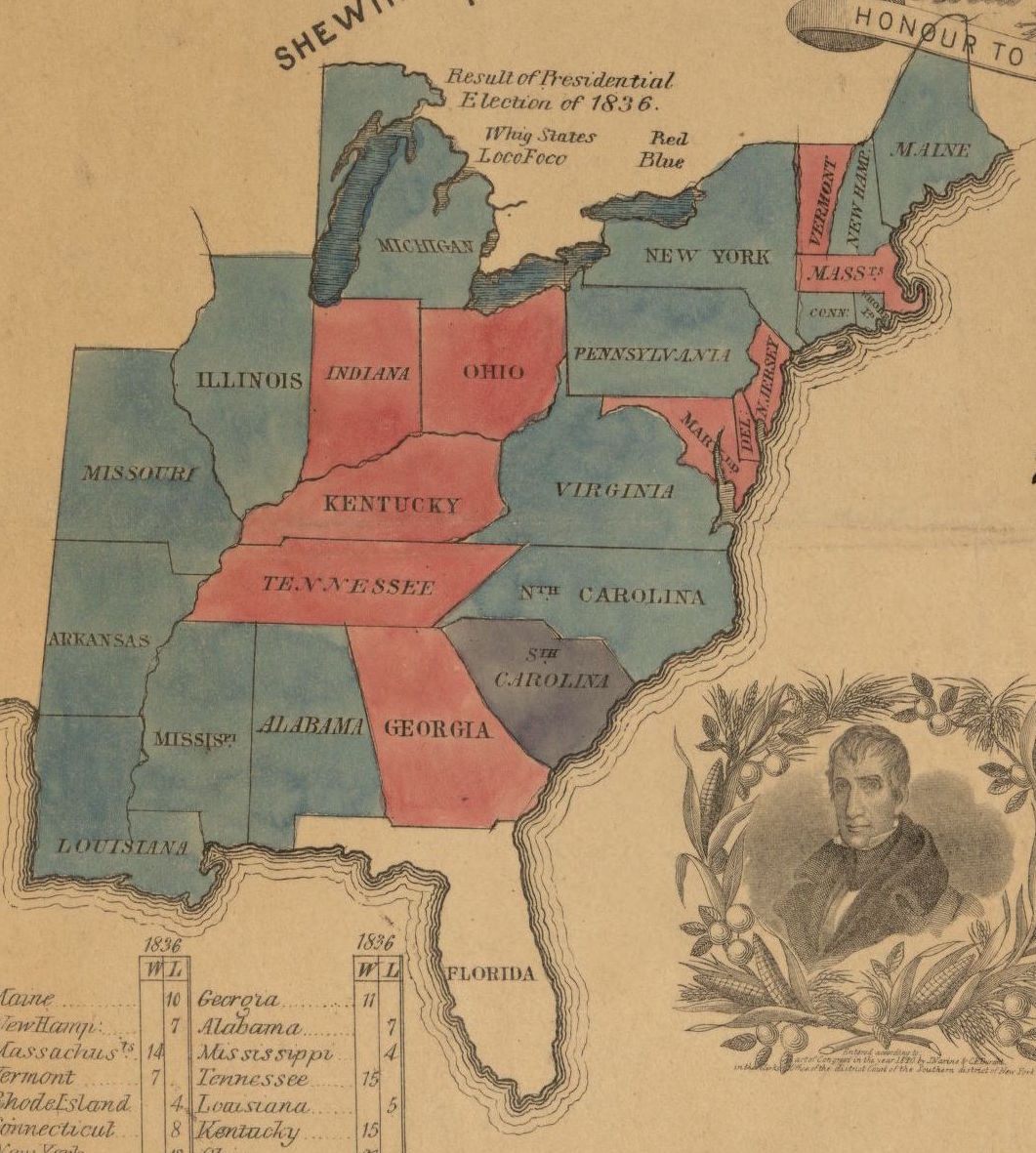
Unfortunately, Van Buren ended up being regarded as a less-than-stellar president. This is where the phrase at the top right of this map, “sober second thoughts of the people,” comes in:
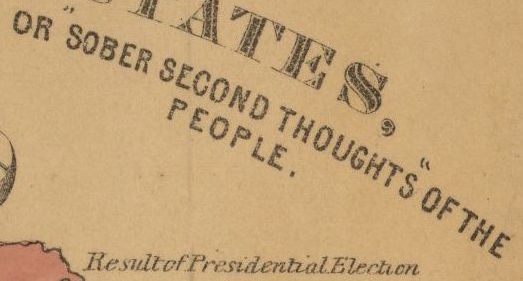
It refers to the first year of Van Buren’s presidency, when a national financial collapse caused the American people to sit up, rub the soot from their eyes and essentially say, “Wait. We chose this guy? Oy.”
Van Buren was widely blamed for Panic of 1837, an economic crisis that resulted in higher unemployment levels, lower wages, and collapsed banks. (The seeds of the crisis had been planted by previous president Andrew Jackson, but since he had vacated the White House before the real trouble hit, Van Buren took the brunt of public ire.)
The recession was still in effect when the 1840 presidential election rolled around. Needless to say, Van Buren—“Van Ruin,” as his opponents dubbed him—did not win. As the map shows, a whole lot of Loco Foco states went Whig:
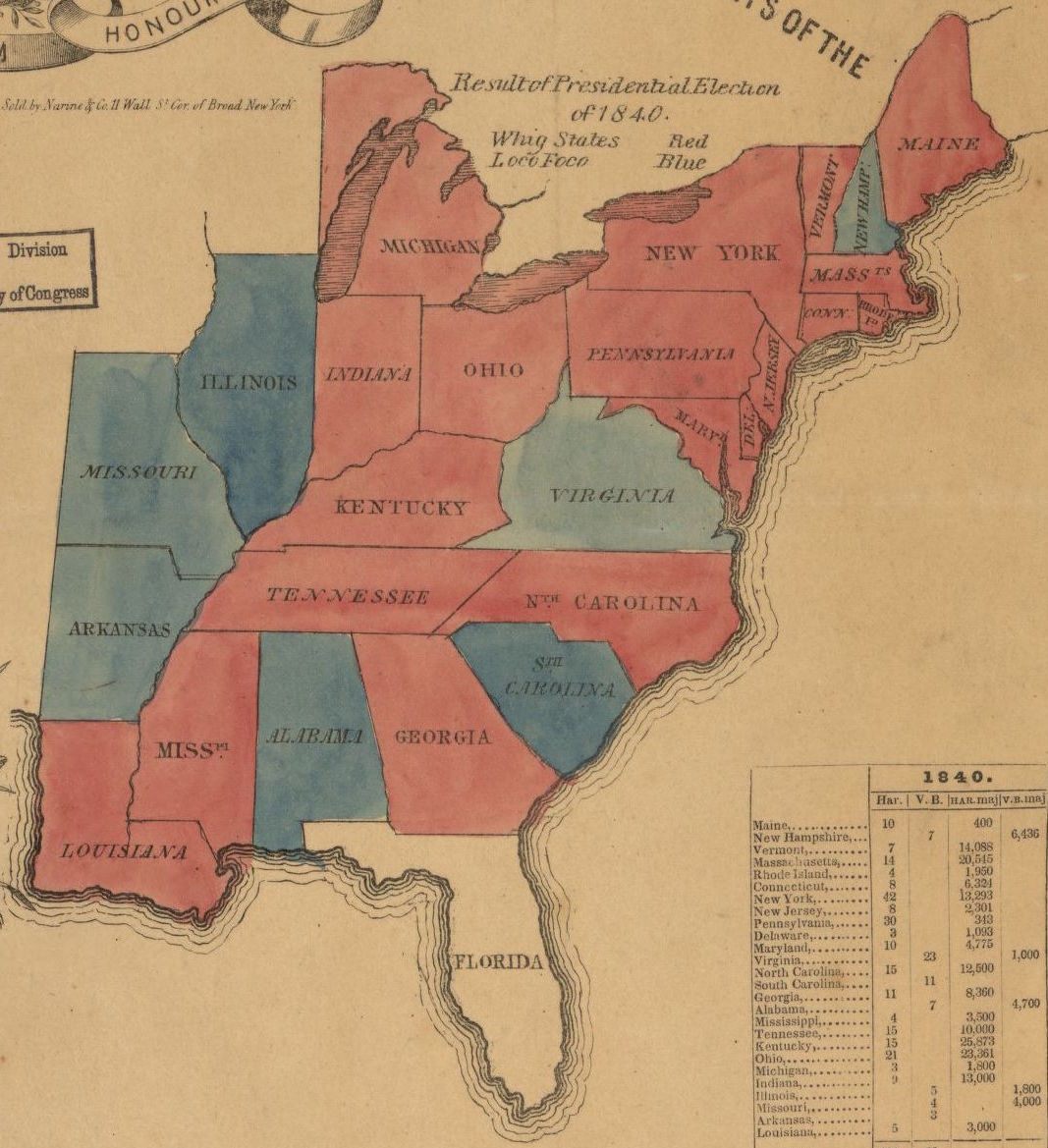
Voters envisioned salvation for the nation in the form of new President William Henry Harrison, which explains why he is wreathed reverently in succulent corn on this map:
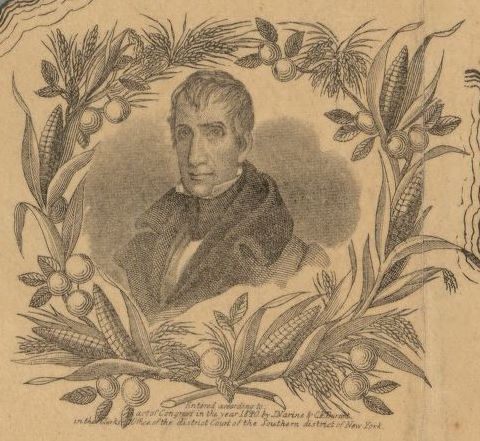
Unfortunately, as anyone who has heard the Simpsons’ “Mediocre Presidents” song knows, things didn’t quite go as planned. Thirty-two days into his presidency, Harrison dropped dead of pneumonia. He still holds the record for the shortest presidency in the history of the United States.
This 1840 political chart is an artifact of a tumultuous time in American politics—one in which, despite the chaos, everyone had impeccable penmanship: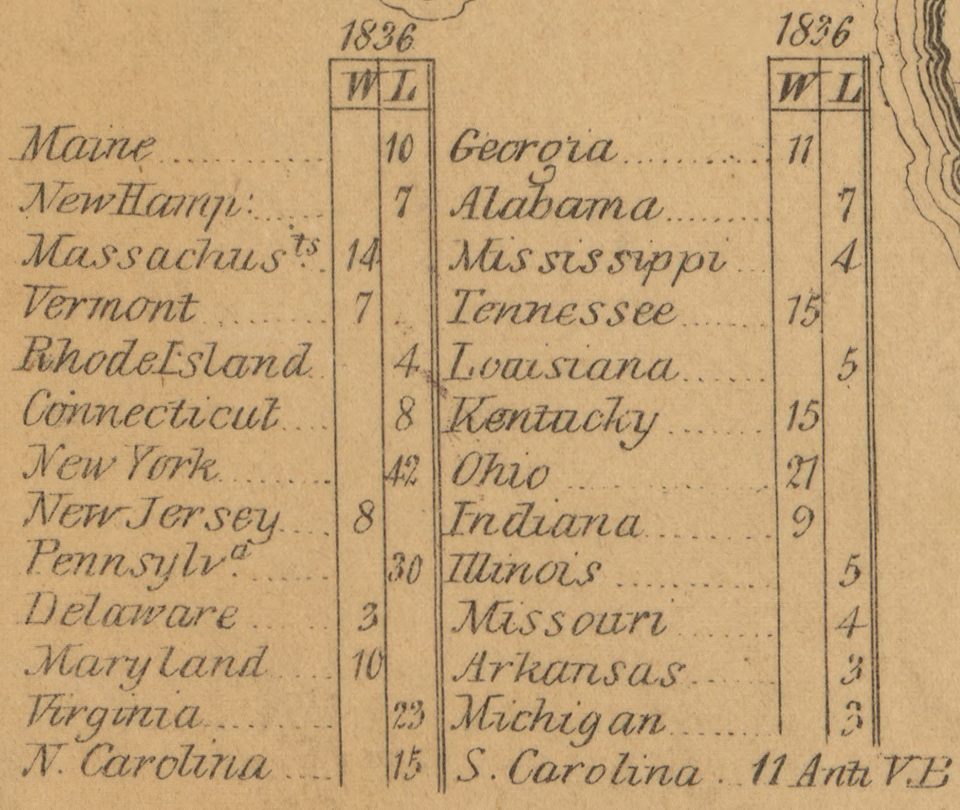
The 1836 presidential election results. “W” is Whig, “L” is LocoFoco.
Map Monday highlights interesting and unusual cartographic pursuits from around the world and through time. Read more Map Monday posts.











Follow us on Twitter to get the latest on the world's hidden wonders.
Like us on Facebook to get the latest on the world's hidden wonders.
Follow us on Twitter Like us on Facebook